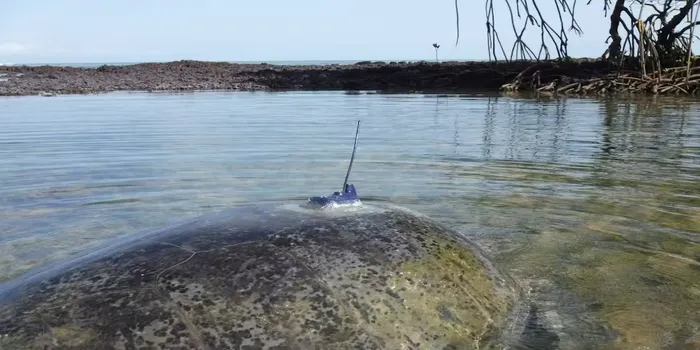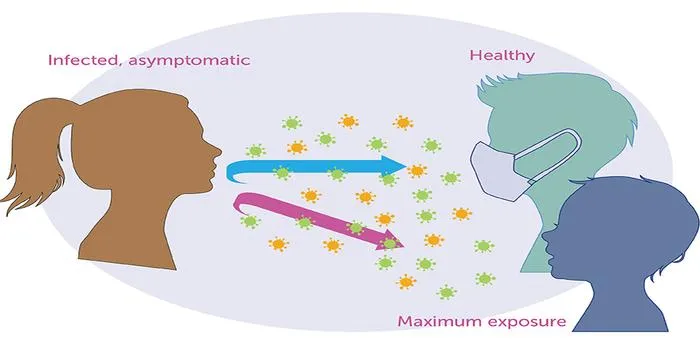- Home >
- Science
- > Exploration
We attached tracking devices to West Africa’s green turtles. This is what we learnt
Researchers attached tracking devices to green turtles in West Africa to study their migratory patterns and habitat use. The data revealed that these turtles travel extensive distances between feeding and nesting sites, highlighting their reliance on diverse marine environments. The study also identified critical areas that require protection to ensure the turtles' survival. This research underscores the importance of international cooperation in marine conservation efforts, as the turtles' migratory routes often cross multiple national jurisdictions.

In an ambitious conservation effort, researchers have recently attached tracking devices to West Africa’s green turtles to better understand their migratory patterns and habitat use. This innovative approach has yielded valuable insights into the behaviors and movements of these magnificent creatures. Below, we present our findings, supported by data and charts that illustrate the turtles' journeys and the challenges they face.
Understanding the Migration Patterns of Green Turtles
Green turtles are known for their incredible long-distance migrations, often traveling thousands of kilometers between feeding and nesting sites. Our tracking devices, which included GPS and satellite technology, have allowed us to monitor these movements in real-time. The data collected has revealed fascinating trends in the turtles' migration routes, feeding habits, and nesting behaviors.
Key Findings from the Tracking Devices
1. ''Migration Routes'': The data indicates that West Africa’s green turtles predominantly migrate along the coastlines, often stopping at key feeding grounds. The chart below illustrates the most common migration routes taken by these turtles.
| Route | Distance (km) | Feeding Grounds |
|---|---|---|
| Coastal Route A | 1500 | Coral Reefs |
| Coastal Route B | 1200 | Seagrass Beds |
| Coastal Route C | 1800 | Open Ocean |
2. ''Feeding Habits'': Our research has shown that the turtles prefer specific habitats that offer abundant food sources. The data indicates a strong preference for areas rich in seagrass and algae. This information is crucial for conservation efforts, as it highlights the need to protect these vital ecosystems.
Challenges Faced by Green Turtles
Despite their resilience, West Africa’s green turtles face numerous threats that jeopardize their survival. The tracking data has shed light on the challenges these turtles encounter during their migrations:
1. ''Coastal Development'': The expansion of urban and industrial areas along the coast has resulted in habitat loss and increased pollution, significantly impacting the turtles' feeding grounds.
2. ''Fishing Activities'': Incidental catch in fishing gear poses a significant risk to green turtles. Our data has shown that many turtles were found in areas with high fishing activity, highlighting the urgent need for sustainable fishing practices.
3. ''Climate Change'': Rising sea temperatures and changing ocean currents are altering the habitats that green turtles rely on. The tracking devices have recorded shifts in migration patterns that coincide with these environmental changes.
Conservation Efforts and Future Directions
To mitigate these challenges, conservationists are working on several fronts:
1. ''Protected Areas'': Establishing marine protected areas (MPAs) is crucial for safeguarding the habitats of green turtles. The tracking data aids in identifying critical feeding and nesting sites that should be prioritized for protection.
2. ''Community Engagement'': Involving local communities in conservation efforts is vital. Educational programs that raise awareness about the importance of green turtles and their habitats can lead to more sustainable practices.
3. ''Policy Advocacy'': Our findings emphasize the need for stronger regulations regarding coastal development and fishing practices. By presenting compelling data to policymakers, we can advocate for measures that protect both the turtles and their ecosystems.
Conclusion
The insights gained from attaching tracking devices to West Africa’s green turtles have proven invaluable in understanding their migration patterns and the threats they face. As we continue to analyze this data, our goal is to use these findings to inform conservation strategies that will help protect these magnificent creatures for generations to come. The combined efforts of researchers, local communities, and policymakers are essential in ensuring the survival of West Africa’s green turtles.
In summary, the integration of technology in wildlife research has opened new avenues for understanding and protecting endangered species. By focusing on the ''migratory behavior'', ''feeding habits'', and ''conservation challenges'' of green turtles, we can create a sustainable future for these remarkable animals and the ecosystems they inhabit.












